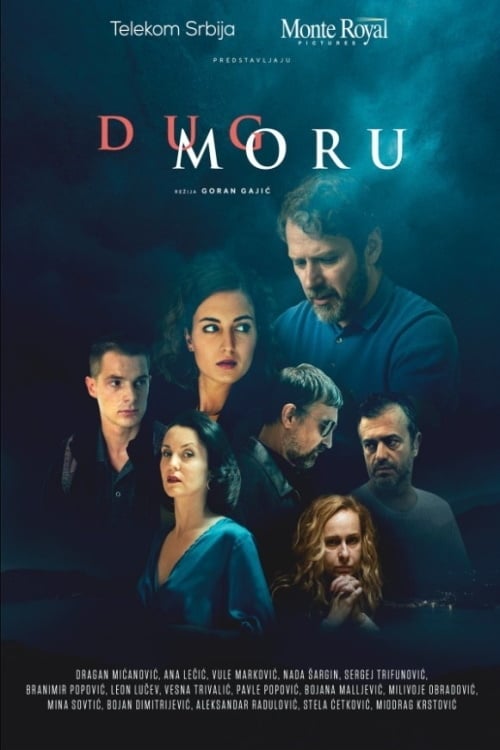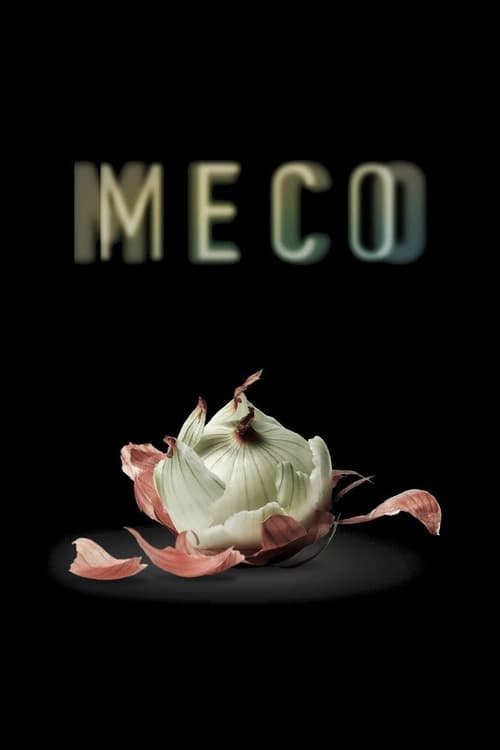
Ask Your Own Question
What is the plot?
In Episode 7 of "Besa," the episode opens with a tense atmosphere as the aftermath of the previous events weighs heavily on the characters. The scene is set in a dimly lit room where the main character, a conflicted man named Luan, is grappling with the consequences of his choices. He is visibly shaken, reflecting on the moral dilemmas he faces as he navigates his dual life.
As the episode progresses, Luan receives a phone call that disrupts his thoughts. The call is from his brother, who is in a precarious situation. Luan's brother is in hiding after a violent confrontation, and he urgently needs Luan's help. This moment reveals Luan's internal struggle; he feels a strong sense of loyalty to his family but is also aware of the dangers that come with getting involved.
The scene shifts to Luan meeting with a group of men who are part of a criminal organization. The tension is palpable as they discuss the fallout from the recent violence. Luan tries to assert his position within the group, but he is met with skepticism. The leader of the group questions Luan's commitment, pushing him to prove his loyalty. This confrontation highlights Luan's precarious position, caught between his family's safety and his own moral compass.
In a pivotal moment, Luan decides to take action to protect his brother. He devises a plan to confront the men who are after his brother. The scene transitions to a dark alley where Luan meets with a contact who has information about his brother's whereabouts. The contact is nervous, glancing around as they speak, emphasizing the danger surrounding them. Luan's determination is evident as he listens intently, ready to act.
As Luan prepares to execute his plan, he gathers a small group of trusted allies. They strategize in a secluded location, discussing the risks involved. Luan's leadership qualities emerge as he motivates his friends, instilling a sense of purpose in them. The camaraderie among the group is palpable, but there is an underlying tension as they all understand the stakes involved.
The next sequence unfolds with Luan and his allies tracking down the location where his brother is hiding. They approach a rundown building, and the atmosphere is thick with suspense. Luan's heart races as they move stealthily, each step echoing the urgency of their mission. They communicate through hand signals, showcasing their training and the seriousness of the situation.
Upon entering the building, they encounter a group of armed men. A confrontation ensues, and the scene is chaotic. Luan and his allies engage in a fierce fight, showcasing their skills and determination. The camera captures the intensity of the struggle, with close-ups of Luan's face reflecting his resolve and fear. The fight is brutal, with punches thrown and weapons drawn, creating a visceral sense of danger.
In the midst of the chaos, Luan spots his brother being held captive. He fights his way through the fray, driven by a mix of desperation and love. The moment is charged with emotion as Luan finally reaches his brother, and they share a brief, intense exchange filled with relief and urgency. Luan urges his brother to escape, but they are still surrounded by enemies.
As they make their way out, the group faces more resistance. Luan's leadership is tested as he coordinates their escape, shouting orders and encouraging his allies. The tension escalates as they navigate through the building, dodging bullets and grappling with their pursuers. The scene is a whirlwind of action, with close calls and narrow escapes that heighten the stakes.
Eventually, Luan and his brother manage to break free from the building, but not without sustaining injuries. They reach a vehicle waiting outside, and the urgency of their situation is palpable. Luan drives recklessly, his focus solely on getting his brother to safety. The emotional weight of the moment is evident as they exchange worried glances, both aware of the dangers that still lurk.
The episode concludes with Luan and his brother finding temporary refuge in a safe house. They are exhausted and battered, but there is a sense of relief in their reunion. Luan's internal conflict remains unresolved, as he contemplates the choices he has made and the path ahead. The final shot lingers on Luan's face, capturing the complexity of his emotions as he grapples with the consequences of his actions and the uncertain future that lies ahead.
What is the ending?
In the ending of "Besa," Season 1, Episode 7, the tension reaches a climax as the characters confront their choices and the consequences of their actions. The episode concludes with a series of pivotal moments that redefine relationships and set the stage for future conflicts.
As the episode unfolds, we see the aftermath of the escalating tensions between the main characters. The protagonist, who has been grappling with loyalty and betrayal, faces a critical decision that will impact not only their life but also the lives of those around them. The emotional weight of their choices is palpable, as they navigate the murky waters of trust and revenge.
In the final scenes, the protagonist makes a choice that leads to a confrontation with a key antagonist. This encounter is charged with emotion, revealing deep-seated fears and desires. The resolution of this conflict is both dramatic and poignant, leaving the audience with a sense of unresolved tension.
The episode closes with a haunting image that encapsulates the themes of sacrifice and the cost of loyalty. The characters are left to grapple with the consequences of their actions, setting the stage for the next chapter in their intertwined lives.
Now, let's delve into the ending in a more detailed, chronological narrative.
The episode begins with a palpable sense of dread hanging over the characters. The protagonist, feeling the weight of their decisions, is seen pacing in a dimly lit room, their face a mask of conflict. They are torn between their loyalty to their family and the moral implications of their actions. The camera lingers on their furrowed brow, capturing the internal struggle that defines their character.
As the scene shifts, we find ourselves in a tense meeting between the protagonist and the antagonist. The setting is stark, with shadows playing across the walls, symbolizing the darkness of their conflict. The antagonist, with a cold demeanor, confronts the protagonist about their recent choices. The dialogue is sharp, filled with accusations and veiled threats, as both characters reveal their motivations. The protagonist's voice trembles with emotion, showcasing their fear and determination.
In a pivotal moment, the protagonist makes a bold decision, choosing to stand their ground rather than back down. This choice is met with a fierce reaction from the antagonist, leading to a physical confrontation. The fight is raw and visceral, with each blow representing the culmination of their long-standing rivalry. The camera captures the intensity of the struggle, focusing on the characters' expressions of pain and resolve.
As the dust settles, the protagonist emerges victorious but at a great cost. They are left battered and bruised, both physically and emotionally. The aftermath of the confrontation is heavy, as the protagonist grapples with the reality of their actions. They stand alone, the weight of their choices pressing down on them, symbolizing the isolation that often accompanies such decisions.
In the final moments of the episode, we see the protagonist reflecting on their journey. The camera pans out, revealing the desolate landscape around them, mirroring their internal turmoil. The haunting score underscores the gravity of the situation, leaving the audience with a lingering sense of unease.
The episode concludes with a powerful image of the protagonist walking away from the scene, their silhouette fading into the distance. This moment encapsulates the themes of sacrifice and the complexities of loyalty, leaving viewers to ponder the implications of the characters' choices as they await the next chapter in their story.
The fates of the main characters are left hanging in the balance, with unresolved tensions promising further conflict in the future. The protagonist, while having faced their antagonist, is left to navigate the emotional fallout of their actions, setting the stage for deeper exploration of their character in subsequent episodes.
Is there a post-credit scene?
In "Episode 7" of "Besa," there is no post-credit scene. The episode concludes without any additional content after the credits roll, focusing instead on the resolution of the main plot points and character arcs presented throughout the episode. The narrative wraps up the tensions and conflicts that have been building, leaving viewers with a sense of closure for the episode's events.
What significant choices does the character of Luan make in Episode 7 that impact his relationships?
In Episode 7, Luan faces a critical decision regarding his loyalty to his family versus his growing feelings for a woman outside of his traditional circle. This internal conflict leads him to confront his past and the expectations placed upon him, ultimately affecting his relationship with both his family and his love interest.
How does the character of Drita evolve in this episode, particularly in her interactions with Luan?
Drita's character in Episode 7 showcases her struggle between her love for Luan and her desire for independence. Her interactions with him are charged with tension as she grapples with the implications of their relationship on her own identity and future, revealing her vulnerability and strength.
What role does the setting play in the events of Episode 7, particularly in relation to the characters' decisions?
The setting in Episode 7, particularly the contrasting environments of the bustling city and the quiet, intimate spaces, serves to highlight the characters' emotional states. The city represents the chaos and pressure of their lives, while the quieter moments allow for introspection and pivotal decisions that shape their paths.
What conflicts arise between the characters of Luan and his family in this episode?
In Episode 7, Luan faces mounting pressure from his family regarding his choices, leading to heated confrontations. His family's expectations clash with his personal desires, creating a rift that forces him to reevaluate his loyalties and the consequences of his actions.
How does the theme of betrayal manifest in the relationships depicted in Episode 7?
Betrayal is a central theme in Episode 7, particularly through the actions of secondary characters who undermine Luan's trust. This betrayal not only affects Luan's relationships but also serves to deepen the emotional stakes, as he must navigate the fallout and decide whom he can truly rely on.
Is this family friendly?
"Besa," particularly in Season 1, Episode 7, contains themes and scenes that may not be suitable for children or sensitive viewers. The episode includes:
- Violence: There are scenes depicting physical confrontations and the aftermath of violent events, which may be distressing.
- Emotional Turmoil: Characters experience intense emotional struggles, including grief and betrayal, which could be upsetting for younger audiences.
- Mature Themes: The episode explores complex adult themes such as loyalty, revenge, and moral dilemmas that may be difficult for children to understand.
- Language: There may be instances of strong language that could be considered inappropriate for younger viewers.
These elements contribute to a narrative that is more suited for mature audiences.























